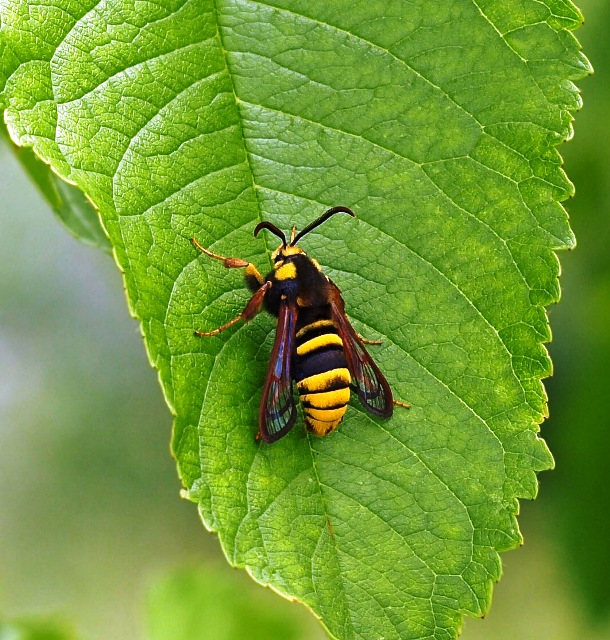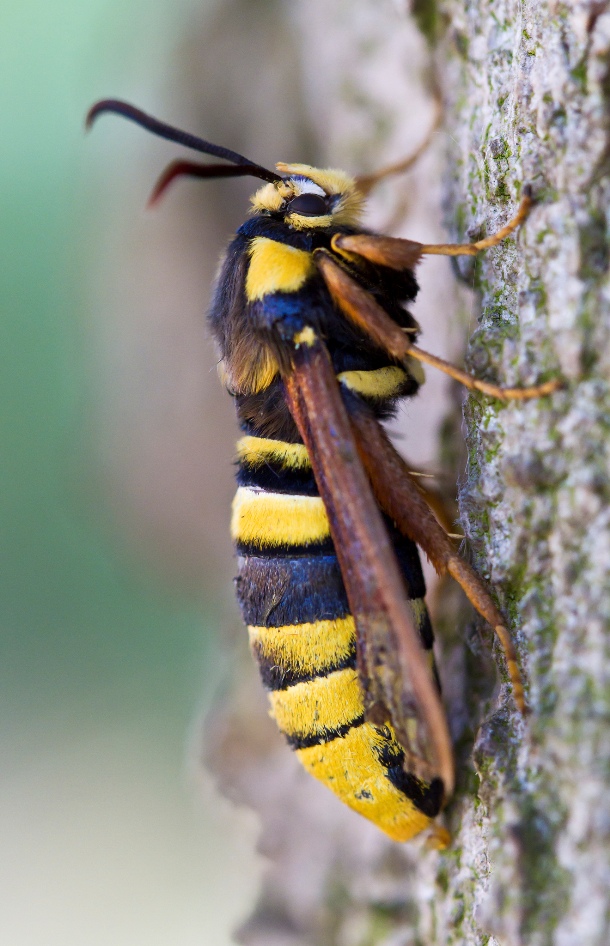Mimicry in Nature is nothing new. But this has got to be one of my favorite examples.
That’s a Hornet Moth or Hornet Clearwing (Sesia apiformis), and it’s a great example of what’s know as Batesian mimicry: the “most commonly known and widely studied of mimicry complexes,” wherein “a harmless species has evolved to imitate the warning signals of a harmful species directed at a common predator.”
Please be careful not to confuse this with the de Havilland DH-87 Hornet Moth. Which is an airplane, and not an actual moth. Also, do not confuse it with the Lunar Hornet Moth (Sesia bembeciformis), which IS an actual moth, but is also quite a bit bigger. I’ve been told that it “presents a fearsome sight to the uninitiated,” and I didn’t want to scare anyone.
This apiformis guy, though, isn’t fearsome. He’s gorgeous.
Attribution(s): “Adult on Leaf” (from Wikipedia) made available via a Creative Commons Attribution-ShareAlike 2.0 Austria (CC BY-SA 2.0 AT) license; “Adult on Trunk” made available by Natural England via a Creative Commons Attribution-NonCommercial-NoDerivs 2.0 Generic (CC BY-NC-ND 2.0) license.














